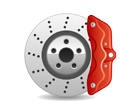CarComplaints.com Notes: The Dodge Intrepid, Stratus & other Chrysler sedans are infamous for oil sludge problems with the 2.7L V6 engine. If someone offers to sell you a 2.7L V6 model, it's only worth the price of the scrap metal it's going to shortly turn into.
NOTE: Only the 2.7L V6 has the oil sludge problem. Our "Avoid like the Plague" designation is ONLY for models with the 2.7L V6 engine. All other available engines are very reliable with no major problems.
Even with regular maintenance, the oil sludge defect eventually destroys the 2.7L engine typically around 80,000-100,000 miles. The only true fix we know about is to put in the larger 3.2L engine, which has a great reputation.
This issue was never deemed a safety defect by the Feds, so there was no recall. In the end, Chrysler got away with FOUR YEARS worth of defective 2.7L V6 engines in their sedans.
8.0
pretty bad- Typical Repair Cost:
- No data
- Average Mileage:
- 96,500 miles
- Total Complaints:
- 2 complaints
Most Common Solutions:
- not sure (2 reports)

brakes problem
Helpful websites
- No one has added a helpful site for this 2000 Intrepid problem yet. Be the first!




A D V E R T I S E M E N T S
I have changed my brakes, and they scream horribly. I can hear them over the radio and the kids. It is sooooo embarrassing!
- ldogle, Rockmart, GA, US